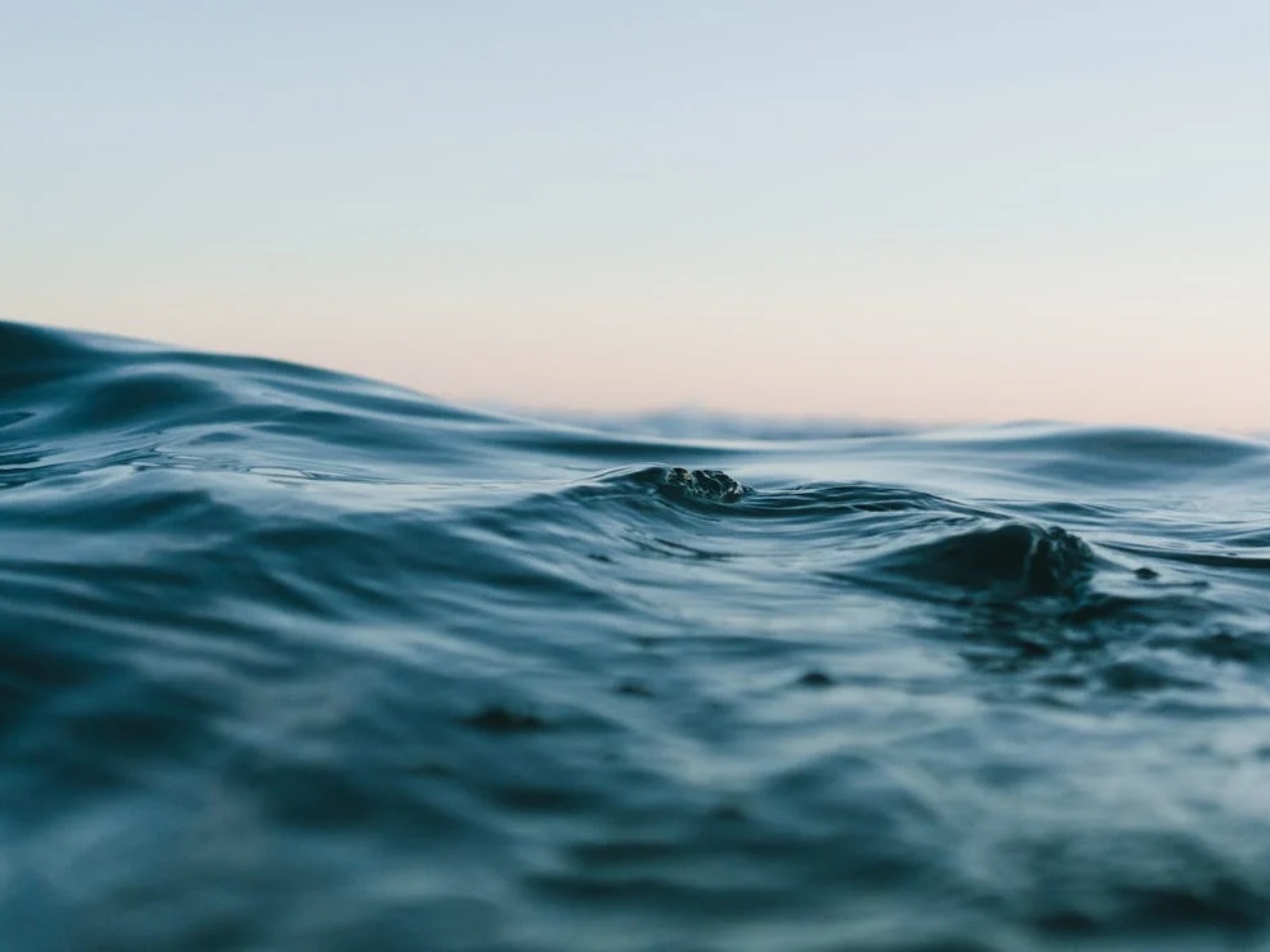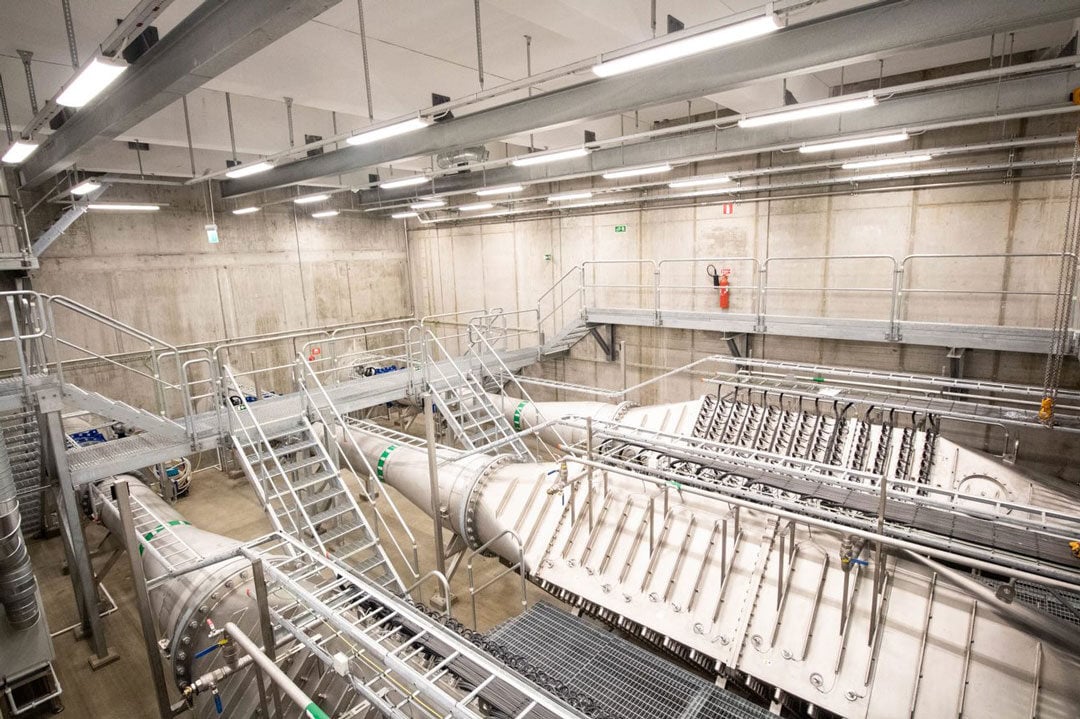VandCenter Syd reduces ammonia emissions with machine learning
VandCenter Syd
VandCenter Syd is one of Denmark's largest and oldest water supply companies. Their new solution, developed in collaboration with twoday, helps create a healthier aquatic environment in seas, fjords, and rivers.

Client
VandCenter Syd
Industry
Energy & utilities
Deliveries
Data analysis and consultation
Machine learning model development
Implementation of data-driven solutions
To do this as optimally as possible, VandCenter Syd is at the forefront of using their data. Previously, twoday has helped implemententing a machine learning model at VandCenter Syd that can locate potential leaks in water pipes.
This case focuses on a collaboration we have entered into with VandCenter Syd to create a machine learning model that can predict elevated levels of ammonia in wastewater.
The challenge
Water quality threatened by unpredictable ammonium levels
To understand the background for the solution, we first need to understand a bit about ammonium and the work that VandCenter Syd is doing at their treatment plants. The treatment plants receive wastewater in Odense and Nordfyns municipality. Here, the water is cleaned before being discharged.
There is ammonium in the wastewater. Ammonium is a naturally occurring ion that binds to oxygen and potentially contributes to causing oxygen depletion in aquatic environments.
Therefore, VandCenter Syd wants to convert as much ammonium as possible at the treatment plants before the water is discharged into the aquatic environment. It is important to note that the measured values of the ammonium being discharged are significantly below the limit value for the vast majority of the time.
However, employees at VandCenter Syd were wondering why there were occasionally some 'peaks' where the concentration of ammonium being discharged increased significantly - typically in connection with heavy rain over longer periods.
"We wanted to find out what we could do to minimize the number and size of the elevated ammonium values. Here, we were curious if machine learning and artificial intelligence could be used to help us crush the data we had, so we could predict when there would be elevated ammonium values and act accordingly," says Andreas Bjørn Bassett, operations manager at VandCenter Syd.

The Solution
Ensuring water quality with data-driven insights
Andreas contacted twoday to map the data that VandCenter Syd has from the inflow and outflow of the treatment plants.
"From our online measurements, we could see that we had certain peaks where the ammonium levels were elevated. The question was whether we could let the water run in a different way or use our facilities differently to reduce the discharge of ammonium," he explains.
It turned out that it was possible to predict elevated ammonium levels and how to change the flow of water to reduce the amount based on data.
Therefore, twoday built a machine learning system that initially ran in the background and provided recommendations on how to change the flow of water to the treatment plants. They needed to be sure that the machine learning system could predict elevated ammonium levels before putting it into production.
When they compared the system's predictions and recommendations with what actually happened at the plant, they could see that it was accurate.
"We took the next step and put the model into production, so the model's recommendations to reduce the discharge of ammonium now run automatically into our control system. It's the model that decides."
Andreas Bjørn Bassett
Operations Manager, VandCenter Syd
VandCenter Syd's treatment plant has sensors that measure a wide range of parameters, including flow rate, concentrations, and water levels - a snapshot of the plant's current state.
The machine learning model is trained on historical sensor measurements to predict peaks in the ammonium concentration at the plant's outflows.
A set of rules for the system's flow recommendations has also been established. Recommendations are based on the current state of the treatment plant and the machine learning model's prediction of whether there will be a peak in ammonium concentration.
The ruleset was developed in close collaboration with VandCenter Syd's experts, taking into account the physical limitations of the treatment plant. For example, there are limits to the amount of water that can be in certain tanks and the maximum flow the plant can handle.
For security reasons, the machine learning system has been deployed within VandCenter Syd's own network. It continuously writes recommendations to the plant's SCADA system, which then adjusts the flow in the plant.
The result
Data-powered predictions enable proactive water treatment
The model can automatically adjust the flow of water to VandCenter Syd's treatment plant, reducing the amount of ammonia discharged into rivers, streams, fjords, and the sea around Odense and Nordfyn.
After the model was put into production, there has been a significant reduction in both the number and size of ammonium peaks. It is difficult to give an exact assessment of how much the ammonium discharge has been reduced, as it largely depends on the wind and weather. But for Andreas Bjørn Bassett, it has been worth the investment.
"The challenge is that solutions like this are often measured in terms of economics. And this solution is not going to pay for itself. However, the solution has reduced the discharge of ammonium, which supports our internal goal of creating healthy water environments. So I am very satisfied," he says.
Unlocking new possibilities through data-driven insights
In addition to the primary goal of reducing the emission of ammonia, VandCenter Syd has also seen the project as a learning experience in how they can use and work with their data in the operation of their treatment plants.
As an example, Andreas mentions the possibility of finding out which bacteria are in the treatment plants and how they can promote the "right" bacteria. Bacteria can do different things; some can convert ammonia to nitrate, which is then converted to free nitrogen.
"The smarter we can get about what the different bacteria can do and whether it is possible to promote certain bacteria, the more opportunities it gives us to create water environments that are as optimal as possible, and thus, among other things, give better conditions for fish in the water environments," says Andreas Bjørn Bassett, before he concludes with his usual curious approach to data:
"So, in theory, we can get data from DNA sequencing, which we can then control our treatment plants with. Whether we can do it in reality, we have to find out."
Related stories
Improved stakeholder communication and customer management for Fingrid
Discover how Fingrid enhanced public transport accessibility with a cutting-edge mobile app.
Sydvatten optimizes financial planning with software
Read how Sydvatten utilizes twoday's INSIKT system to enhance project management and financial forecasting, ensuring reliable drinking water supply to over a million residents
twoday collaborates with the Swedish Energy Agency to develop an interactive fuel report
Explore how the Swedish Energy Agency transformed Sweden's annual fuel consumption report into an interactive Power BI visualization, enhancing data accessibility and user engagement.
Contact us
How can we help you?
.jpg?width=2048&height=1367&name=twoday%20G%C3%B6teborg%20-%20webres%20(13%20of%20146).jpg)

.jpg?width=2048&height=1367&name=twoday%20G%C3%B6teborg%20-%20webres%20(74%20of%20146).jpg)